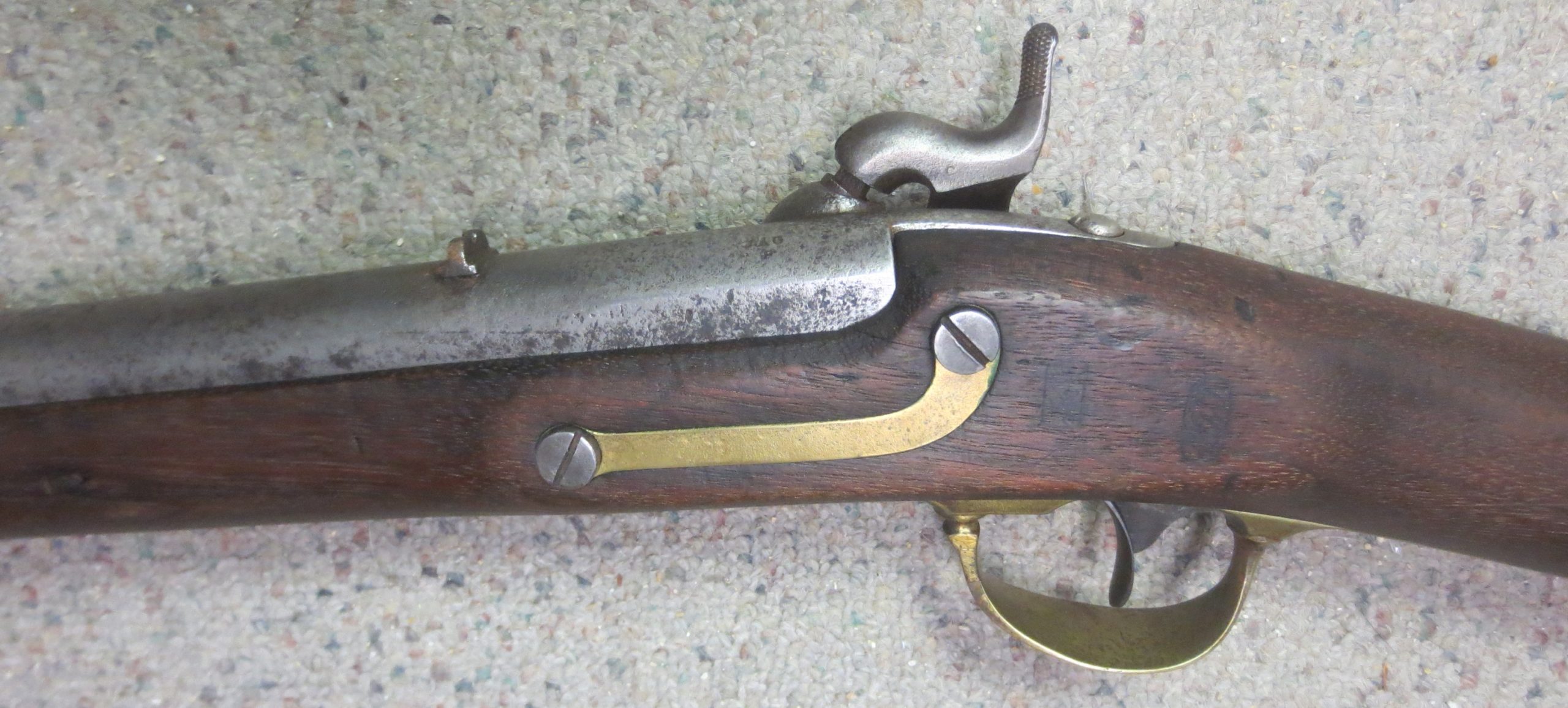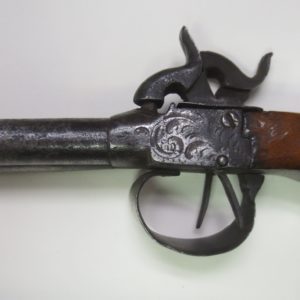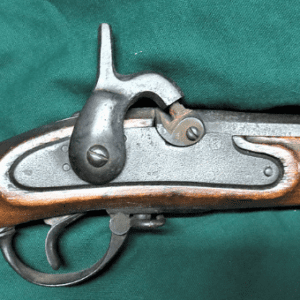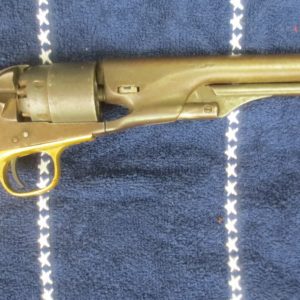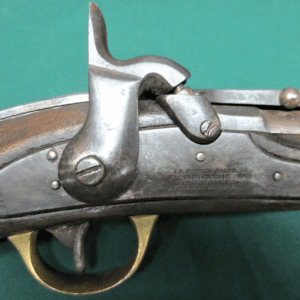Description
Very interesting UNIQUE example of the rifle made famous in the Mexican War by Jefferson Davis, future President of the Confederacy, and his Mississippi Infantry. This example was manufactured in 1848 by Whitney Firearms of New Haven, Connecticut and is one of approximately 26,500 produced by Eli Whitney, or about 29% of the total production by all contractors. As the decade of the 1850s ended, and the new .58 Minié ammunition became the standard for use by the US military, many of the M1841 rifles in store at the various national and state arsenals were altered to the new caliber and were also re-rifled. This example is one of the altered examples which saw heavy use on both sides in the American Civil War.
The M1841 was the first general issue percussion long arm to be adopted by the US military. The rifle was adopted in 1841 and production began in 1843. The military rifle of the early to mid 19thcentury was a special purpose arm intended for limited issue and use. The rifle was not designed to accept a bayonet, as the tactics of the time called for riflemen to be deployed as skirmishers or to take long range shots at specific targets of opportunity (such as officers, artillery crews, etc.) and then retreat behind the main infantry battle line prior to an assault. The riflemen would then harass the enemy from the flanks.
The US M1841 Rifle earned the nickname of “Mississippi Rifle” in the hands of the 1st Mississippi Rifles during the Mexican-American War. The regiment was led by future US Secretary of War, and later Confederate States President, Colonel Jefferson Davis of Mississippi. The riflemen under his command participated in the battles of Monterrey (September 1846) and Buena Vista (February 1847) and from that time on, the weapon was known as the “Mississippi Rifle”.
At some point in time, the forestock was shortened and the nosecap relocated making the weapon look much like the 1803 Harpers Ferry rifle. The workmanship is arsenal grade overall and the barrel remains full length, indicating the stock may have been damaged in battle and refurbished for further use, commonly done by Confederate forces. The sling swivels were removed as commonly done on altered weapons, as slings were not used anywhere near as much as Hollywood wants you to believe as they often got snagged in brush and were a hindrance.
Mechanically, the action is crisp and all markings are clear including the traces of the original inspector cartouche marks in the stock. The buttplate is stamped with the standard “U.S.” and also a rack or unit number (10).


